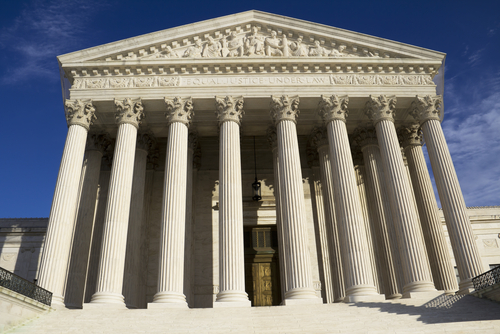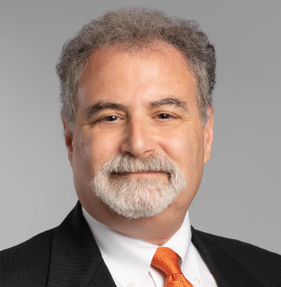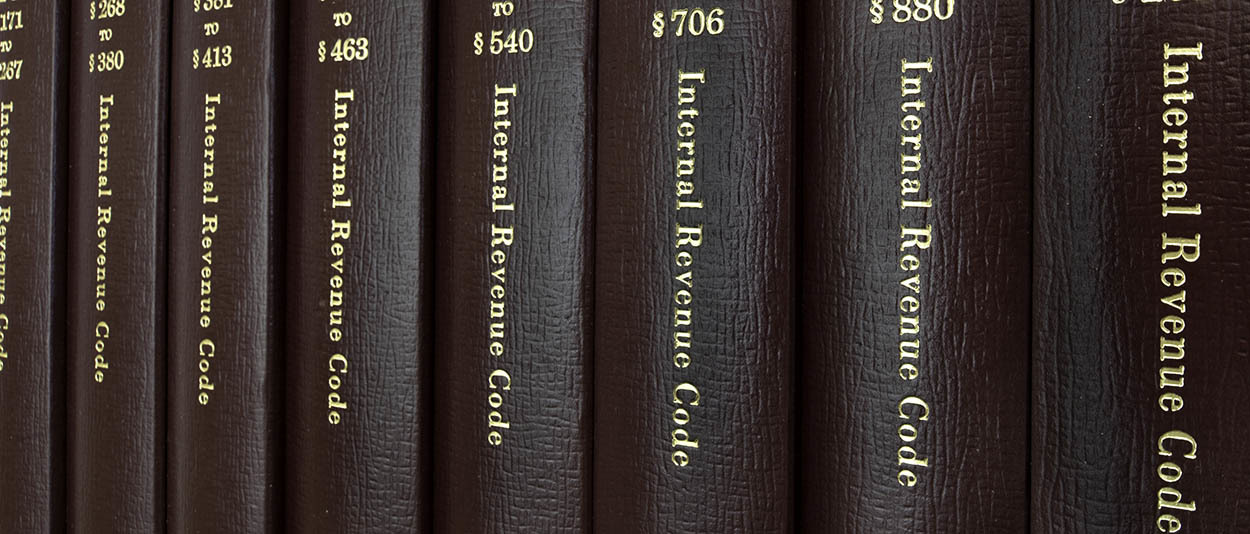- Posts by Larry Brant
 Principal
PrincipalLarry is Chair of the Foster Garvey Tax & Benefits practice group. He is licensed to practice in Oregon and Washington. Larry's practice focuses on assisting public and private companies, partnerships, and high-net-worth ...
 I have yet again encountered another important development diverting me from my multi-part blog series on Subchapter S. Earlier this week, the Corporate Transparency Act (“CTA”) hit a massive obstacle. I feel compelled to report about it.
I have yet again encountered another important development diverting me from my multi-part blog series on Subchapter S. Earlier this week, the Corporate Transparency Act (“CTA”) hit a massive obstacle. I feel compelled to report about it.
On December 3, 2024, the U.S. District Court for the Eastern District of Texas, in Texas Top Cop Shop, Inc. et al v. Merrick Garland, Attorney General of the United States et al, issued a 79-page decision, including a preliminary injunction, creating a nationwide prohibition against government enforcement of the CTA.
This decision has created a tsunami of banter among members of the legal profession, the media and the business community. While the decision appears to have delivered an early holiday cheer to many, caution is advised. As my late tax professor, James J. Freeland, would have advised his students after reading the decision, pause for cause!
The Wild Journey
 I am taking time out from my multi-part series on Subchapter S to report on the Washington capital gains tax. As you know, I have reported in several prior blog posts on the numerous challenges confronting the tax. The long, interesting and turbulent ride of this legislation, however, may be over!
I am taking time out from my multi-part series on Subchapter S to report on the Washington capital gains tax. As you know, I have reported in several prior blog posts on the numerous challenges confronting the tax. The long, interesting and turbulent ride of this legislation, however, may be over!
Initiative 2109 was presented to Washington state voters. A “yes” vote for the initiative would repeal the new tax, while a “no” vote would retain the new tax.
On November 5, 2024, the voters spoke loud and clear – they overwhelmingly voted to retain the Washington capital gains tax. A whopping 64.1 percent of the voters (2,341,553 voters) voted “no” on the initiative, while 35.9 percent of the voters (1,312,162 voters) voted “yes.”
Basic Rules
 IRC § 6501(a) generally requires the IRS to assess tax within three (3) years after a tax return is filed by the taxpayer.
IRC § 6501(a) generally requires the IRS to assess tax within three (3) years after a tax return is filed by the taxpayer.
There are two (2) notable exceptions to this rule under IRC § 6501(c) and (e), namely:
- Under IRC § 6501(c), an unlimited assessment period exists in the case of a false or fraudulent return where the taxpayer has the intent to evade tax; and
- Under IRC § 6501(e), a six (6) year period for assessment exists in the case where the taxpayer understates gross income by more than 25 percent, unless there is adequate disclosure on the taxpayer’s original tax return.
In the case of a shareholder of an S corporation, the analysis is generally conducted at the shareholder level. In other words, the focus is on the shareholder’s tax return, and the issue is whether there is a problem with that return that would extend the limitation period for assessment.
As we know from the basic rules, absent fraud or an undisclosed substantial understatement of gross income, the limitation period for assessment is three (3) years. Likewise, absent fraud, an undisclosed substantial understatement of gross income extends the limitation period for assessment to six (6) years.
 The Tax Reform Act of 1986 (the “TRA 86”) was signed into law by President Ronald Reagan on October 22, 1986, exactly 38 years ago today. TRA 86 was sponsored by, among others, Representative Richard Gephardt (D-Missouri) in the U.S. House of Representatives and Senator Bill Bradley (D-New Jersey) in the U.S. Senate. It was strongly supported by the Chairman of the House Ways and Means Committee, Dan Rostenkowski (D-Illinois) and the Chairman of the Senate Finance Committee, Bob Packwood (R-Oregon).
The Tax Reform Act of 1986 (the “TRA 86”) was signed into law by President Ronald Reagan on October 22, 1986, exactly 38 years ago today. TRA 86 was sponsored by, among others, Representative Richard Gephardt (D-Missouri) in the U.S. House of Representatives and Senator Bill Bradley (D-New Jersey) in the U.S. Senate. It was strongly supported by the Chairman of the House Ways and Means Committee, Dan Rostenkowski (D-Illinois) and the Chairman of the Senate Finance Committee, Bob Packwood (R-Oregon).
TRA 86 is one of the most comprehensive pieces of tax reform legislation ever enacted in the United States. It was the result of a collaborative effort by Democrats and Republicans that spanned three years.
 In this Part XII of my multi-part series on some of the not-so-obvious aspects of S corporations, I explore a consistent theme – taxpayers lose fights with taxing authorities when they fail to maintain adequate records. Keeping adequate records is vitally important to S corporations and their shareholders or, for that matter, all taxpayers.
In this Part XII of my multi-part series on some of the not-so-obvious aspects of S corporations, I explore a consistent theme – taxpayers lose fights with taxing authorities when they fail to maintain adequate records. Keeping adequate records is vitally important to S corporations and their shareholders or, for that matter, all taxpayers.
Background
Time and time again, taxpayers lose their battles with the IRS and other taxing authorities for the same reason – failure to maintain adequate records. One of the greatest services that tax advisers can provide their clients is preaching the virtues of maintaining good records.
 I am excited to share that the 83rd Institute on Federal Taxation (IFT) will be held in New York City on October 20-25, 2024, and in San Diego, California on November 17-22, 2024.
I am excited to share that the 83rd Institute on Federal Taxation (IFT) will be held in New York City on October 20-25, 2024, and in San Diego, California on November 17-22, 2024.
This year, I will present my latest white paper, “A Magical Mystery Tour Through Subchapter S – A Look At Some Of The Twists and Turns.” During our session, we will take a deep dive into some of the interesting, yet deceptive and/or obscure, provisions of Subchapter S that could catch the unwary off guard. Our tour will take us on a journey through some of the treacherous terrain containing the built-in gains tax, shareholder eligibility, the impact of excessive passive income on S corporations with C E&P and the impact of a fraudulent S corporation return on the shareholders, and we will end our journey frolicking through the beauty created by some interesting cases and rulings.
 In this Part XI of my multi-part series on some of the not-so-obvious aspects of S corporations, I explore a topic that should be obvious but which appears to be ignored by many taxpayers and their tax advisers – accurate computation of shareholder basis for purposes of taking losses flowing through from the S corporation is important.
In this Part XI of my multi-part series on some of the not-so-obvious aspects of S corporations, I explore a topic that should be obvious but which appears to be ignored by many taxpayers and their tax advisers – accurate computation of shareholder basis for purposes of taking losses flowing through from the S corporation is important.
Background
In 2005, the Internal Revenue Service launched a study to assess the reporting compliance of S corporations. The study, carried out under the National Research Program (“NRP”), involved the examination of roughly 4,800 randomly selected S corporation returns from tax years 2003-2004. Based upon the portions of the study disclosed by the Service to the public, six major areas of noncompliance in the S corporation arena were detected:
Introduction
 When considering converting a C corporation to an S corporation, tax advisers and taxpayers need to pay careful attention to the many perils that exist. Failure to pay close attention to the road in this area could result in a disaster. This Part X of my multi-part series on Subchapter S is designed to illuminate some of the road hazards that exist along the roadway traveling from Subchapter C to Subchapter S.
When considering converting a C corporation to an S corporation, tax advisers and taxpayers need to pay careful attention to the many perils that exist. Failure to pay close attention to the road in this area could result in a disaster. This Part X of my multi-part series on Subchapter S is designed to illuminate some of the road hazards that exist along the roadway traveling from Subchapter C to Subchapter S.
Before converting an existing C corporation to an S corporation, an analysis of several matters should be undertaken, including the impact of the election on the shareholders and the corporation. These matters include, but are not limited to, the topics briefly discussed below.
 Unlike the rules contained in Subchapter K surrounding partnership distributions, which tend to be somewhat complex, the distribution rules contained in Subchapter S are fairly straightforward. Nevertheless, from time to time, taxpayers and tax advisers appear to experience difficulty navigating through the applicable S corporation distribution rules. This Part IX of my multi-part blog series on S corporations is designed to take some of the mystery out of the S corporation distribution rules. The following is a brief overview of the S corporation distribution rules.
Unlike the rules contained in Subchapter K surrounding partnership distributions, which tend to be somewhat complex, the distribution rules contained in Subchapter S are fairly straightforward. Nevertheless, from time to time, taxpayers and tax advisers appear to experience difficulty navigating through the applicable S corporation distribution rules. This Part IX of my multi-part blog series on S corporations is designed to take some of the mystery out of the S corporation distribution rules. The following is a brief overview of the S corporation distribution rules.
Background
The purpose of pass-thru taxation under Subchapter S is to avoid the imposition of an entity-level tax. Shareholders of S corporations are taxed on their proportionate share of the corporation’s income, regardless of whether it is actually received; therefore, distributions from S corporation income should not be taxed again, otherwise there would be a second tax on such income, undercutting the purpose of pass-thru taxation. IRC §1368 allows for shareholder distributions in a manner that avoids double-taxation of S corporation income, but it still imposes an entity-level tax on the earnings and profits (“E&P”) remaining from any prior operations as a C corporation. Much of the complexity within the Subchapter S distribution rules is due to these latter rules, which are designed to prevent C corporations from avoiding double-taxation on C corporation earnings by simply electing S corporation status.
At a fundamental level, distributions from S corporations must be analyzed in one of two categories: S corporations without E&P and S corporations with E&P.
 On June 28, 2024, in Loper Bright Enterprises v. Raimondo,[1] the U.S. Supreme Court overruled the landmark case of Chevron U.S.A. v. Natural Resources Defense Council, Inc. et. al.[2] Interestingly, the Loper decision was rendered exactly 40 years and three days after the U.S. Supreme Court had decided Chevron.
On June 28, 2024, in Loper Bright Enterprises v. Raimondo,[1] the U.S. Supreme Court overruled the landmark case of Chevron U.S.A. v. Natural Resources Defense Council, Inc. et. al.[2] Interestingly, the Loper decision was rendered exactly 40 years and three days after the U.S. Supreme Court had decided Chevron.
I expect there will be a slew of law review and other scholarly journal articles that will examine in detail the court’s decision and its impact on American jurisprudence. This blog article is not designed to provide that type of commentary. Rather, my aim is to provide readers with a succinct but clear understanding of the Loper ruling and its likely implications relative to the administration of our federal tax laws.
 Larry J. Brant
Larry J. Brant
Editor
Larry J. Brant is a Shareholder and the Chair of the Tax & Benefits practice group at Foster Garvey, a law firm based out of the Pacific Northwest, with offices in Seattle, Washington; Portland, Oregon; Washington, D.C.; New York, New York, Spokane, Washington; Tulsa, Oklahoma; and Beijing, China. Mr. Brant is licensed to practice in Oregon and Washington. His practice focuses on tax, tax controversy and transactions. Mr. Brant is a past Chair of the Oregon State Bar Taxation Section. He was the long-term Chair of the Oregon Tax Institute, and is currently a member of the Board of Directors of the Portland Tax Forum. Mr. Brant has served as an adjunct professor, teaching corporate taxation, at Northwestern School of Law, Lewis and Clark College. He is an Expert Contributor to Thomson Reuters Checkpoint Catalyst. Mr. Brant is a Fellow in the American College of Tax Counsel. He publishes articles on numerous income tax issues, including Taxation of S Corporations, Reasonable Compensation, Circular 230, Worker Classification, IRC § 1031 Exchanges, Choice of Entity, Entity Tax Classification, and State and Local Taxation. Mr. Brant is a frequent lecturer at local, regional and national tax and business conferences for CPAs and attorneys. He was the 2015 Recipient of the Oregon State Bar Tax Section Award of Merit.
